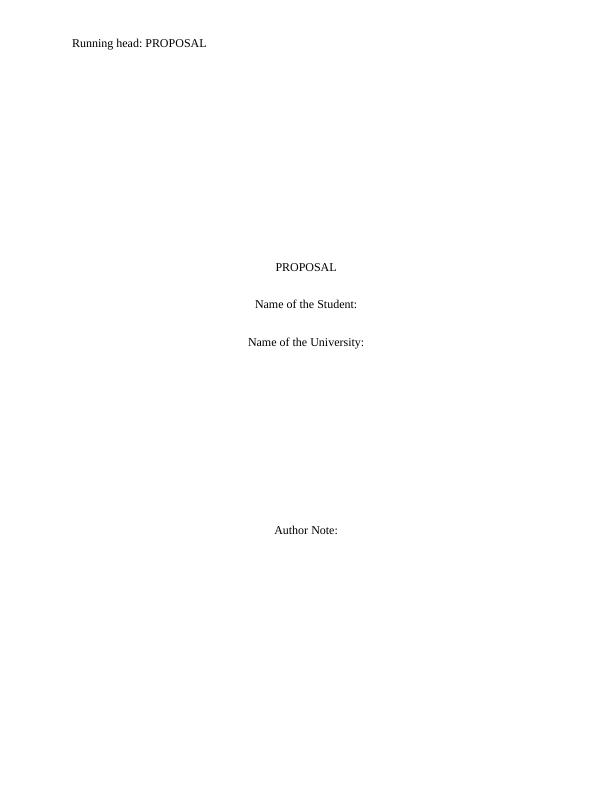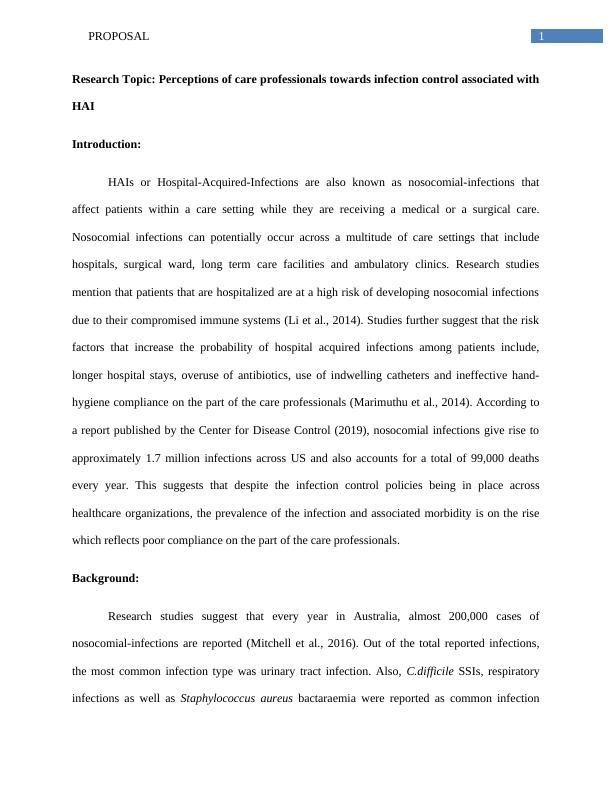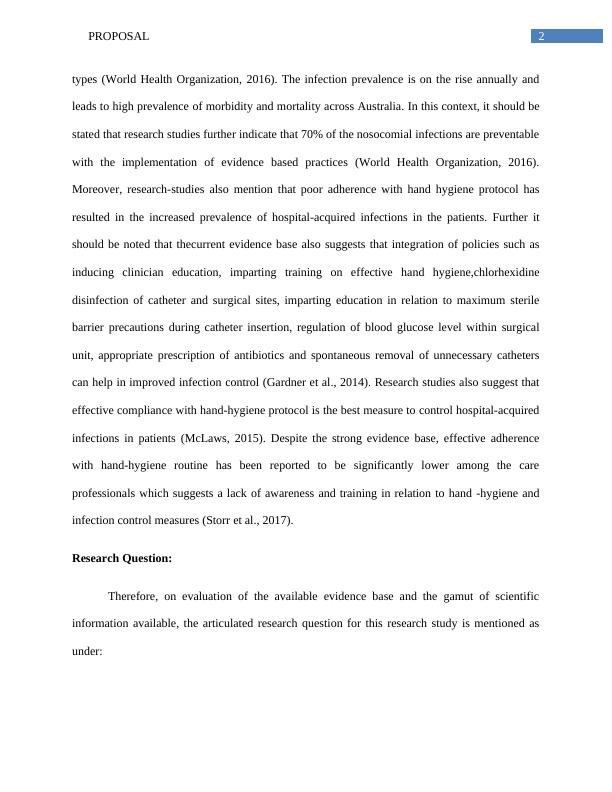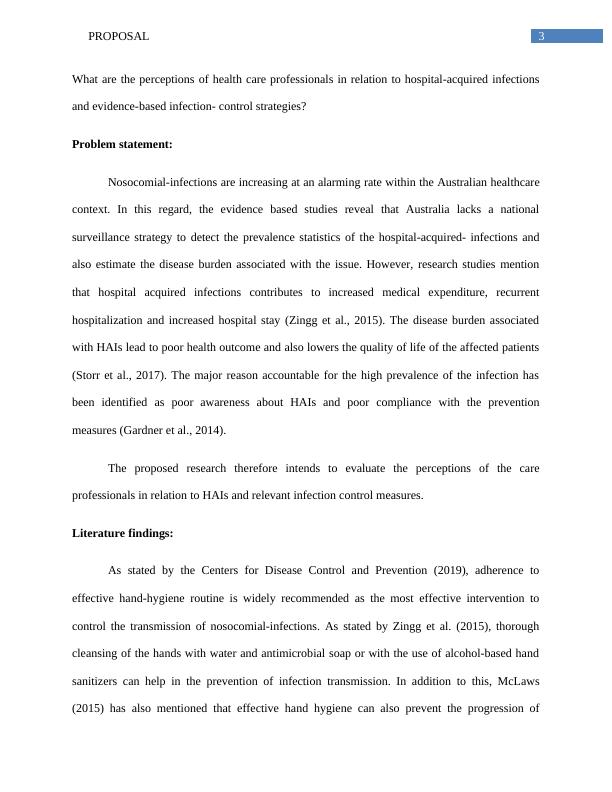Perceptions of Care Professionals towards Infection Control
This study guide provides support for the learning journey of the unit 'Research in Nursing' and outlines the content and objectives for each teaching session. The assessment guide focuses on writing a research proposal, including the introduction, research questions, literature review, and conceptual framework.
16 Pages3207 Words83 Views
Added on 2023-04-03
About This Document
This research study aims to evaluate the perceptions of care professionals towards infection control and hospital-acquired infections. It explores the barriers experienced by care professionals and aims to improve compliance with infection control measures. The study will use a qualitative research design and conduct semi-structured interviews with healthcare professionals.
Perceptions of Care Professionals towards Infection Control
This study guide provides support for the learning journey of the unit 'Research in Nursing' and outlines the content and objectives for each teaching session. The assessment guide focuses on writing a research proposal, including the introduction, research questions, literature review, and conceptual framework.
Added on 2023-04-03
ShareRelated Documents
End of preview
Want to access all the pages? Upload your documents or become a member.
Impact of Hand Hygiene on Infection Rate in Hospitals
|16
|3918
|161
Study of healthcare workers' experience in infection control training for prevention of hospital acquired infections in Canada
|20
|4108
|69
Formulating a Clinical Question on Hospital Acquired Infection
|7
|1270
|438
According to Miranda Novales
|5
|1204
|17
Standard 3: Preventing and Controlling HAIs
|12
|3373
|233
Hospital Associated Infections (HAIs)
|4
|504
|245




